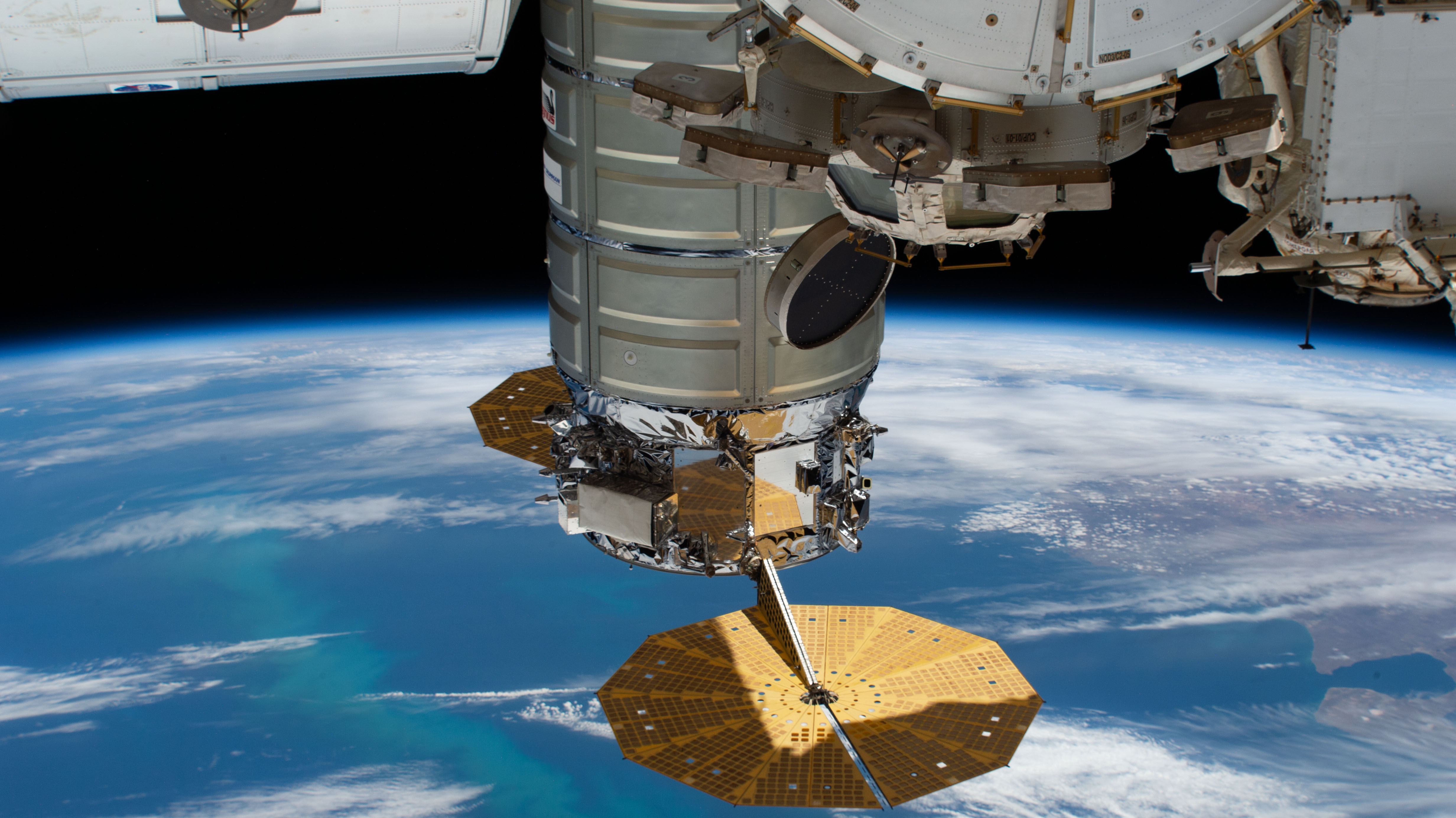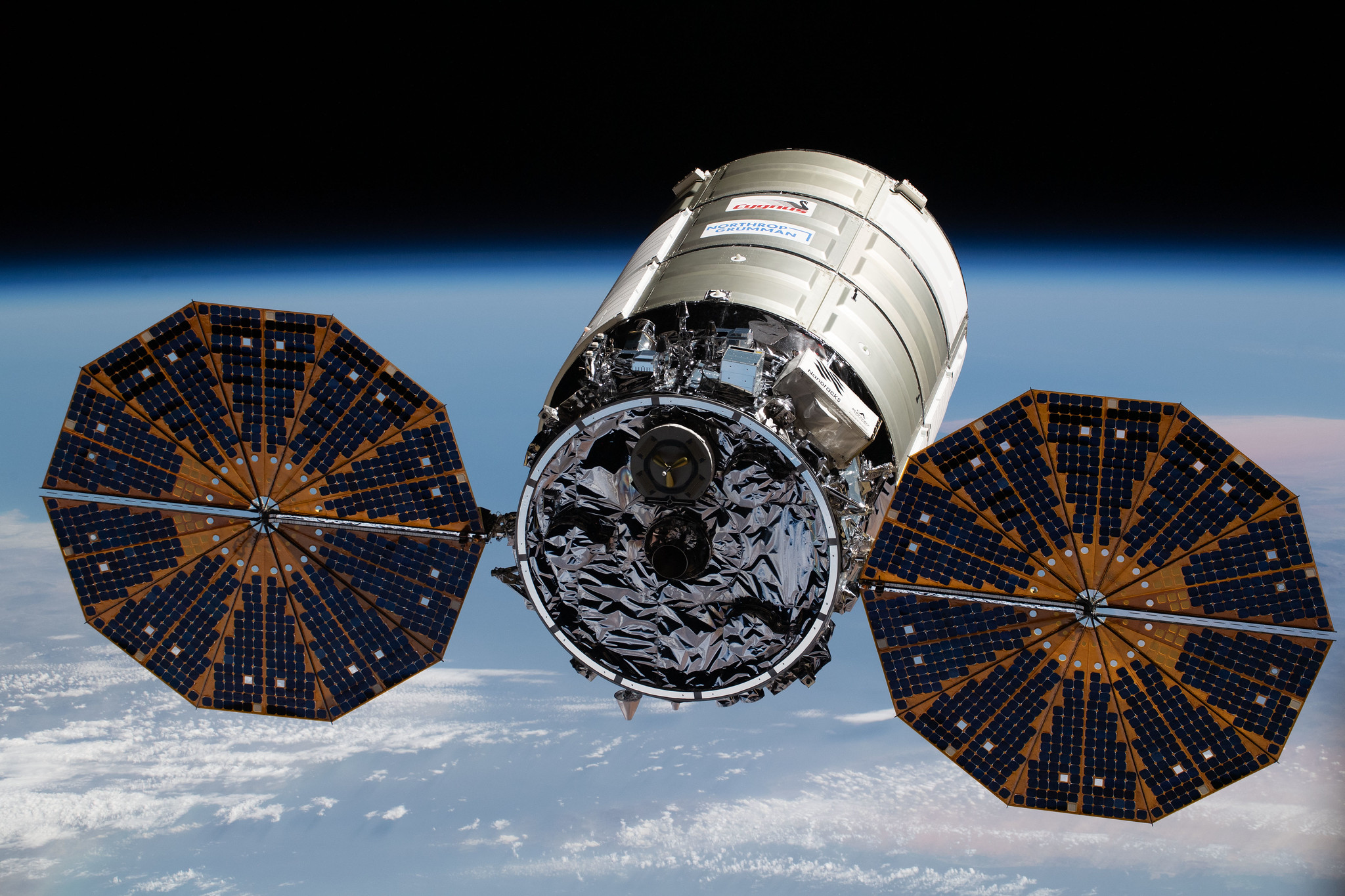Northrop Grumman's Cygnus cargo ship boosts International Space Station's orbit
The craft unsuccessfully attempted the maneuver last week.

A Northrop Grumman Cygnus spacecraft successfully reboosted the International Space Station (ISS) for the first time, raising the orbiting lab to its normal operating altitude of around 250 miles above Earth.
The reboost took place on Saturday (June 25) and marks the first time a Cygnus spacecraft has performed a full reboost procedure. A previous reboost attempt took place last week, but was aborted after just 5 seconds as a precaution for reasons that have yet to be disclosed.
During the procedure, Cygnus fired its gimbaled engine in order to raise the space station’s altitude by a tenth of a mile (0.16 kilometers) at apogee and a half a mile (0.8 km) at perigee. These reboost maneuvers are performed regularly and are necessary to counteract the drag the ISS experiences as a result of passing through the Earth's thin upper atmosphere, which slowly pulls the station down over time.
The Cygnus NG-17 mission launched on Feb. 19 from NASA’s Wallops Flight Facility on Wallops Island, Virginia carrying 8,300 pounds (3,765 kilograms) of scientific experiments, food, and other supplies. The craft, named after the late NASA astronaut Piers Sellers, a climate scientist, then docked with the ISS two days later after being captured by the station's robotic arm.
Related: Cygnus cargo ship arrives at space station
The Cygnus cargo spacecraft measure 5.1 meters (16 feet) in length and just over 3 meters (10 feet) in diameter. Each Cygnus has a payload capacity of around 3,000 kilograms, or 6613 lbs. Eighteen Cygnus craft have been launched since 2013, with one failed flight in 2014.

Northrop Gruman has been making improvements and adding additional capabilities to Cygnus since its first launch nine years ago, including adding the ability to reboost the ISS. In a press release, Northrop Grumman’s Steven Krein says that this successful reboost "adds a critical capability to help maintain and support the space station" and "demonstrates the enormous capability Cygnus offers the ISS and future space exploration efforts."
Get the Space.com Newsletter
Breaking space news, the latest updates on rocket launches, skywatching events and more!
Cygnus NG-17 is scheduled to depart the ISS on Tuesday (June 28), after which it will burn up in Earth's atmosphere.
Despite this recent successful reboost, the International Space Station's days are numbered. According to a plan released by NASA, the ISS will be deorbited at some point after 2030, at which point its debris will come to rest in a watery grave under the Pacific Ocean. It's possible that Cygnus spacecraft will be used to help guide the station out of orbit safely.
Email Brett at BTingley@Space.com or follow Brett on Twitter at @bretttingley. Follow us on Twitter @Spacedotcom or on Facebook.
Join our Space Forums to keep talking space on the latest missions, night sky and more! And if you have a news tip, correction or comment, let us know at: community@space.com.

Brett is curious about emerging aerospace technologies, alternative launch concepts, military space developments and uncrewed aircraft systems. Brett's work has appeared on Scientific American, The War Zone, Popular Science, the History Channel, Science Discovery and more. Brett has English degrees from Clemson University and the University of North Carolina at Charlotte. In his free time, Brett enjoys skywatching throughout the dark skies of the Appalachian mountains.









